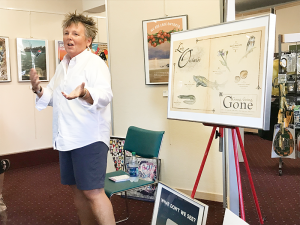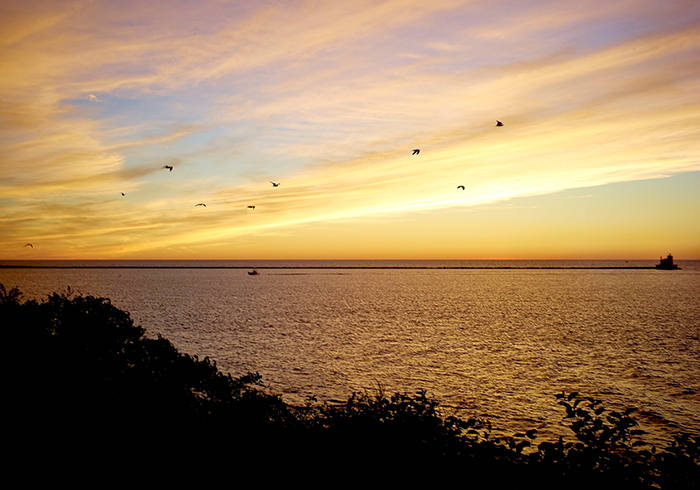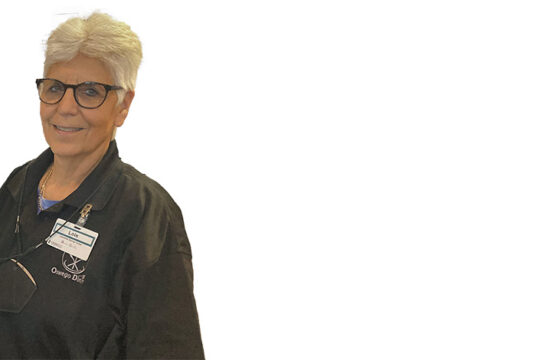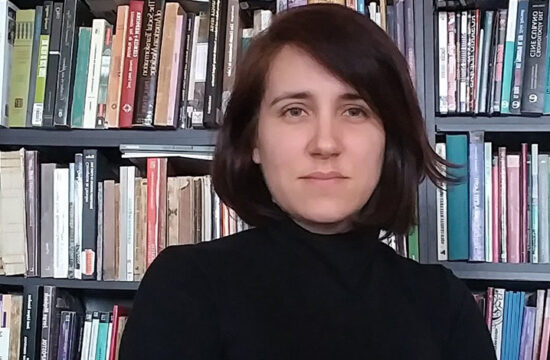Organization takes ownership of a precious resource
By Melissa Stefanec

One of the projects already under way as part of the Grand Challenges Project: Fresh Water For All is “We Are Lake Ontario.”
The group, led by Betsy McTiernan, a retired SUNY Oswego staff member, focuses on water quality issues in Lake Ontario.
According to McTiernan, the SUNY Oswego campus is home to 1.1 miles of shoreline. As part of the Oswego community, she often walked the shoreline and swam in the lake. She was disturbed by the amount of trash she saw on the shoreline.
A lot of that litter was takeout containers and plastic, and she spent time each week picking it up. She decided to reach out to some students about seeing to their own litter, and the response she got was something surprising.
“I started talking to students and I found they were very responsive,” she said. “It wasn’t a lack of caring, it was a lack of awareness.”
So, McTiernan made an appointment to meet with SUNY Oswego President Deborah F. Stanley. She got the authorization to pursue a project to raise student and community awareness about water quality issues and put that awareness to use, especially as it related to keeping the shoreline clean. Thus, We Are Lake Ontario was born.
Since its inception in 2016, We Are Lake Ontario has hosted a number of events. It hosted a series of shoreline litter cleanups with students from Johnson Hall. The group also hosted a speaker and video series at Rice Creek Field Station focusing on the topic of micro-plastic pollution in the Great Lakes.
‘Shining Waters’
We Are Lake Ontario spurred an all-volunteer student group called Shining Waters. Members of Shining Waters are committed to cleaning up litter along the Lake Ontario shoreline.
Although the project was under way prior to the Grand Challenges Project, it found new camaraderie and momentum upon joining the initiative.
For example, this past summer, work from various students was on display at the Tyler Art Gallery at Oswego State Downtown. Work from digital illustration students was on display, as well as posters created by pre-freshman students involved in the Educational Opportunity Program, a program for first-generation college students.
In addition to artwork, three speakers were featured as part of the initiative, each speaking at a lunchtime panel that was open to the public. Leigh Allison Wilson offered an overview of the Grand Challenges Project as the first panel. The second featured Susan Gateley, a local environmental activist and author from Fair Haven.
The third panel featured Amy Bartell from the art department at SUNY Oswego. She spoke about activism and art and how to marry the two. This summer, the gallery features work centered on the Grand Challenges Project.
McTiernan is glad to see so many young people taking an interest in environmental activism, but she knows her work isn’t done yet. She wants to keep We Are Lake Ontario strong and apply for mini-grants available through the Grand Challenges project.
After attending a showing of the posters designed by the EOP students, McTiernan was thrilled to see so many students charged up about environmental activism.
“I would like to see our campus adopt Lake Ontario the same way they adopt the Oswego Lakers,” she said. “This [Lake Ontario] is what we have. This is where we are. We use it all the time, and we owe it to the lake to give back.”












